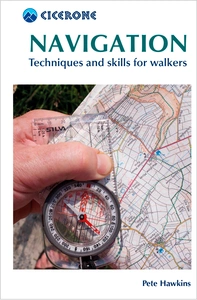Skywatch: Canis Minor, Orion’s (little) canine helper
Dogged by a desire to learn more about the stars and constellations adorning our night sky? In this article, Astronomer Brian Jones concentrates on Canis Minor, ‘the Little Dog’ – a tiny constellation that can be seen from every inhabited part of the world.
Orion, together with its two brightest stars Betelgeuse and Rigel, is one of the most famous and easily-recognisable star patterns in the entire sky (read an earlier blog on Orion). When seen from mid-northern latitudes during evenings in March, this conspicuous group can be found low down in the south western sky.
As with many other constellations, the stars in Orion can be used as ‘pointers’ to help locate other nearby star patterns, and examples of finding our way around the night sky in this way will occur in future articles. For example, if you follow the line formed by the three stars depicting the Belt of Orion to the south east as shown here, you will arrive at brilliant Sirius. Also known as the Dog Star, Sirius is the leading star in the neighbouring constellation Canis Major (the Great Dog) and the brightest star in the entire sky.
However, our focus this time around is on the tiny constellation Canis Minor (the Little Dog), located a little to the north east of Canis Major, and marked by its leading star Procyon. The constellation represents one of Orion’s two hunting dogs, the other dog being depicted by the nearby Canis Major. Orion and his dogs are chasing a hare, denoted by the constellation Lepus and situated immediately to the south of Orion, all four constellations being shown on this chart.

Procyon, the brightest star in Canis Minor, is easily identified and forms a prominent triangle with nearby Sirius and Betelgeuse, the latter marking the shoulder of Orion. This triangle of stars is known as the Winter Triangle, and is something of a landmark of the night sky at this time of year, the three stars forming it being easily located and ranked amongst the brightest stars in the sky.
The Winter Triangle is what astronomers refer to as an asterism,, this being a grouping or collection of stars located within one or more constellations that form an apparent and distinctive pattern as seen from Earth (for definitions of this and other astronomy-related words see www.starlight-nights.co.uk/glossary).
Canis Minor can be seen from every inhabited part of the world. Although generally identified as one of Orion’s hunting dogs, the astronomers of ancient Egypt linked Canis Minor with Anubis, the jackal-headed dog in Egyptian mythology associated with mummification and the after-life. The group is also identified with the gigantic Teumessian Fox, a creature that, according to legend, was destined never to be caught. This huge fox was one of the children of Echidna, a fearsome being who was half-woman, half-snake and known as the ‘Mother of all Monsters’. The Theban general Amphitron was given the seemingly impossible task of destroying the Teumessian Fox to which end he fetched the magical dog Laelaps who had the distinction of catching every creature he chased. However, the abilities of these two creatures were mutually excluding and Zeus, seeing the situation as being irresolvable, placed them both in the sky, Laelaps being identified with the neighbouring constellation Canis Major.
Sirius (in Canis Major) and Procyon are two of the closest stars to our solar system. Procyon shines from a distance of just over 11 light years, a couple of light years or so further away than Sirius. To the naked eye Procyon looks white, although a good pair of binoculars may reveal its slightly yellowish tint.

Procyon derives its name from the Greek for ‘before the dog’, alluding to the fact that Canis Minor rises before the neighbouring celestial dog Canis Major. Gomeisa, on the other hand, has a name derived from the Arabic ‘al-ghumaisa’ meaning ‘the Dim, Watery-eyed or Weeping One’, a name that was originally applied by Arabic astronomers to the constellation as a whole and one which illustrates the point that star names are quite often nothing if not imaginative (for more about star names see www.starlight-nights.co.uk/star-names). Shining from a distance of around 170 light years, Gomeisa is a white star with a true luminosity of some 250 times that of our Sun. Gamma, which shines from a distance of over 300 light years, has a distinctly orange-yellow tint that can be spotted through binoculars. The area of sky containing Gomeisa, Gamma, Epsilon and Eta is quite pretty and well worth a look through binoculars.









